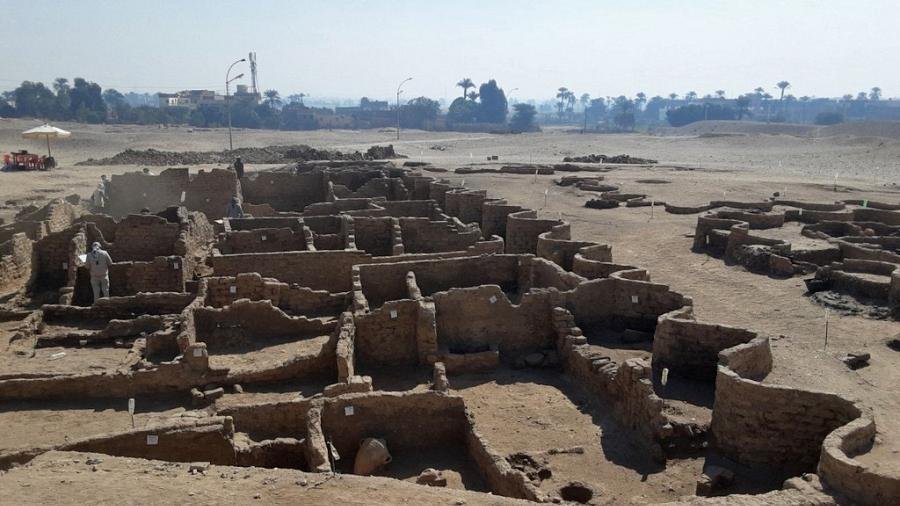The Egyptian Ministry of Antiquities has released photographs of the ruins of an ancient city in the desert outside of Luxor, which archeologists say are the “largest” ever discovered in Egypt and date back to the pharaohs’ golden age 3,000 years ago.
The “lost golden city,” according to renowned Egyptologist Zahi Hawass, was discovered near Luxor, the location of the famed Valley of the Kings.
“The Egyptian mission under Dr. Zahi Hawass found the city that was lost under the sands,” the excavation team said in a statement Thursday.
“The city is 3,000 years old, dates to the reign of Amenhotep III, and continued to be used by Tutankhamun and Ay.”
The discovery was dubbed “the largest” ancient city ever discovered in Egypt by the team.
According to the team’s release, Betsy Bryan, a professor of Egyptian art and archaeology at Johns Hopkins University, described the find as the “second most significant archeological discovery after the tomb of Tutankhamun” nearly a century ago.
Jewelry, colored pottery pots, scarab beetle amulets, and mud bricks containing Amenhotep III’s seals have all been discovered.
“Many foreign missions searched for this city and never found it,” said Hawass, a former antiquities minister.
In September 2020, the team started excavations near Luxor, about 500 kilometers (300 miles) south of Cairo, between the temples of Ramses III and Amenhotep III.
“Within weeks, to the team’s great surprise, formations of mud bricks began to appear in all directions,” the statement said.
“What they unearthed was the site of a large city in good condition of preservation, with almost complete walls, and with rooms filled with tools of daily life.”
– ‘Tombs filled with treasures’ –
Several neighborhoods have been discovered after seven months of excavations, including a bakery with ovens and storage pottery and administrative and residential areas.
According to ancient historians, Amenhotep III inherited an empire that extended from the Euphrates River in modern Iraq and Syria to Sudan and died around 1354 BC.
He ruled for nearly four decades, a reign noted for its opulence and the splendor of its temples, which include the Colossi of Memnon, two giant stone sculptures near Luxor that represent him and his wife.
“The archaeological layers have laid untouched for thousands of years, left by the ancient residents as if it were yesterday,” the team’s statement said.
Bryan said the city “will give us a rare glimpse into the life of the ancient Egyptians at the time where the empire was at his wealthiest.”
The team expressed optimism that more significant discoveries would be made, adding that they had uncovered groups of tombs accessible through “stairs carved into the rock,” similar to those found in the Valley of the Kings.
“The mission expects to uncover untouched tombs filled with treasures,” the statement added.
After years of political unrest following the Arab Spring revolt of 2011, which severely harmed Egypt’s tourism industry, the country is attempting to resurrect tourism by celebrating its ancient heritage.
Egypt’s mummified bodies of 18 ancient kings and four queens were carried through Cairo last week in a procession called the “Pharaohs’ Golden Parade” from the famed Egyptian Museum to the current National Museum of Egyptian Civilization.
Amenhotep III and his wife, Queen Tiye, were among the 22 bodies discovered.
MORE:
- Tarkhan Dress: The Story of the 50000 Years Old Dress from Egypt
- Hypatia, the first female mathematician, was born and killed in Egypt

















